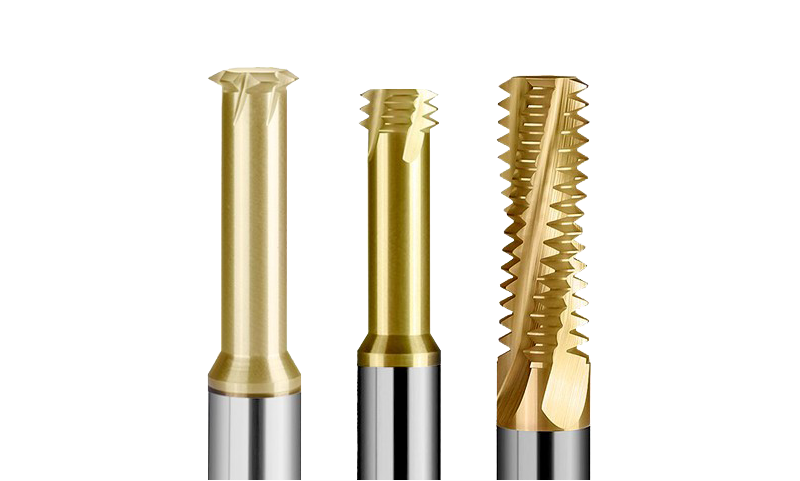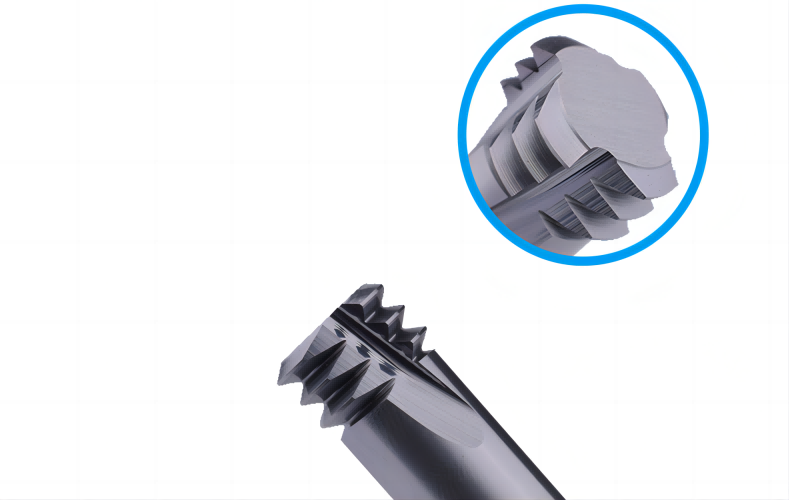1.Accelerated or excessive wear of thread milling cutters
Perhaps due to incorrect selection of cutting speed and feed rate; Excessive pressure on the tool; The selected coating is incorrect, resulting in chip buildup; Caused by high spindle speed.
The solution includes ensuring that the correct cutting speed and feed rate are selected from the machining parameter table; Reduce the feed rate per tooth, shorten the tool change time interval, check the excessive wear of the tool, and the thread at the beginning will wear the fastest; Study the applicability of other coatings, increase coolant flow rate and flow rate; Reduce the spindle speed.
2. Cutting edge collapse
Perhaps due to incorrect selection of cutting speed and feed rate; The thread milling cutter moves and slips on its clamping device; Insufficient rigidity of the machining machine tool; Caused by insufficient coolant pressure or flow rate.
The solution includes determining the correct cutting speed and feed rate from the machining parameter table; Using hydraulic chucks; Confirm the reliability of workpiece clamping, and if necessary, re clamp the workpiece or improve clamping stability; Increase the coolant flow rate and flow rate.
Perhaps due to incorrect selection of cutting speed and feed rate; Excessive pressure on the tool; The selected coating is incorrect, resulting in chip buildup; Caused by high spindle speed.
The solution includes ensuring that the correct cutting speed and feed rate are selected from the machining parameter table; Reduce the feed rate per tooth, shorten the tool change time interval, check the excessive wear of the tool, and the thread at the beginning will wear the fastest; Study the applicability of other coatings, increase coolant flow rate and flow rate; Reduce the spindle speed.
2. Cutting edge collapse
Perhaps due to incorrect selection of cutting speed and feed rate; The thread milling cutter moves and slips on its clamping device; Insufficient rigidity of the machining machine tool; Caused by insufficient coolant pressure or flow rate.
The solution includes determining the correct cutting speed and feed rate from the machining parameter table; Using hydraulic chucks; Confirm the reliability of workpiece clamping, and if necessary, re clamp the workpiece or improve clamping stability; Increase the coolant flow rate and flow rate.
3. Steps appear on the thread profile
It may be due to high feed rate; The machining programming of slope milling adopts axial motion; Excessive wear of thread milling cutters; Reasons such as the distance between the machining part of the tool and the clamping part being too far apart.
The solution includes reducing the feed rate per tooth; Ensure that the thread milling cutter milling the tooth profile curve at the major diameter of the thread without radial movement; Shorten the interval between tool changes; Minimize the overhang of the tool on the clamping device as much as possible.
4. There are differences in detection results between workpieces
The machining part of the cutting tool is far from the clamping part; The selected coating is incorrect, resulting in chip buildup; Excessive wear of thread milling cutters; Workpiece displacement on fixture.
The solutions include minimizing the overhang of the tool on the clamping device as much as possible, studying the applicability of other coatings, and increasing the coolant flow rate and flow rate; Shorten the interval between tool changes; Confirm the reliability of workpiece clamping, and if necessary, re clamp the workpiece or improve clamping stability.
Post time: Jul-19-2023



